
Field Marshals Erwin Rommel (r) and Gerd von Rundstedt in discussion at the Hotel George V, Paris, France, 19 Dec. 1943.
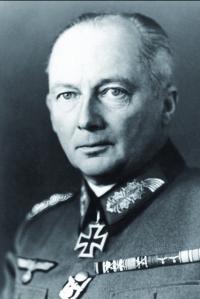
Field Marshal Gunther von Kluge
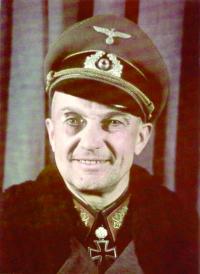
Field Marshal Walter Model wearing Knights’s Cross with Oak Leaves.

LTG Edwawrd H. Brooks, commander U.S. 2nd Armored Division.
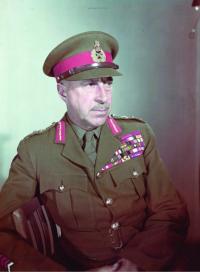
Henry D.G. Crerar, commander First Canadian Army.
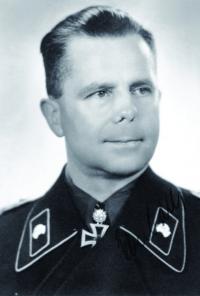
Heinrich Eberbach wearing Knight’s Cross with Oak Leaves, commander German 7th Army.
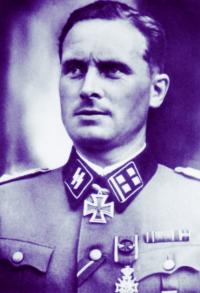
Theodore Wisch wearing Knight’s Cross, commander SS Liebstandarte Adolf Hitler Panzer Division.
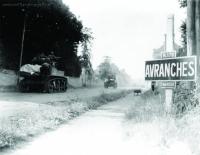
Avranches
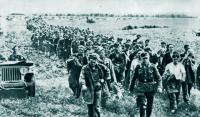
German prisoners at Falaise Gap.
THIS WEEK, 70 years ago, although achieving a great victory, the Allies were losing an opportunity to end the war in Europe by Christmas.
In mid-June, Field Marshals Gerd von Rundstedt and Erwin Rommel met with the German Warlord. Field Marshal von Rundstedt was the senior field commander in the German Army, commander Wehrmacht forces in the West and one of its most respected officers. He was, reportedly, considered the most dangerous and capable of the German field marshals, by Generals Eisenhower and Montgomery. From his accomplishments in North Africa, Field Marshal Rommel, commander of Armeegruppe B, enjoyed an excellent reputation. Both, vainly, urged Hitler to allow the German forces to withdraw behind the Seine River. At the end of the month, they again, vainly, beseeched him to allow them to withdraw behind the Seine.
On July 1, 1944, having learned that his order to withdraw German armor out of the range of Allied naval guns, had been overruled, Field Marshal von Rundstedt called German High Command and told its chief, Field Marshal Wilhelm Keitel to get the decision reversed. Field Marshal Keitel then began whining about the, deteriorating, situation on the Eastern Front and wailed, “What shall we do?” Field Marshal von Rundstedt growled into the phone, “Make peace you fools!,” and slammed the phone down. He was replaced by Field Marshal Günther von Kluge the next day.
When Field Marshal Erwin Rommel was injured in a car accident attempting to avoid Allied fighter planes, Field Marshal von Kluge was given command of Field Marshal Rommel’s Armeegruppe B as well. Like his predecessor field marshals, Field Marshal von Kluge advocated a withdrawal of German forces behind the Seine River. The German Führer refused to countenance such a move, instead ordering foolish attacks - Operation Lüttich.
On August 2, 1944, der Führer ordered Field Marshal von Kluge to mount, “...an immediate counter attack between Mortain and Avranches,” in Normandy. Avranches is a town of 8,000 situated on the southern end of the Cotentin Peninsula, at its intersection with the Brittany Peninsula, while Mortain is a much smaller village about 30 miles to the north. To make sure that his orders were obeyed, the German Warlord sent General Walter Warlimont, Deputy Chief of Staff of the High Command, to Field Marshal von Kluge’s headquarters. Field Marshal von Kluge told General Warlimont there was no chance of success and that the German armed forces should be retired behind the Seine River.
Hitler ordered that the attack be led by eight of the nine Panzer Divisions then in Normandy. However, that proved to be impossible. The XLVII Panzerkorps, commanded by General Baron Hans von Funck, was assigned the task. Its Panzer Divisions included the 2nd, 116th, SS Leibstandarte Adolf Hitler and SS Das Reich Divisions, commanded by respectively, Baron Heinrich von Lüttwitz, Count Gerhardt von Schwerin, Theodore Wisch and Otto Baum. So, on the evening of August 6th, Field Marshal von Kluge reluctantly ordered those forces to attack the U.S. VII Corps, under the command of Major-General J. Lawton Collins.
With the information provided by the “Ultra Project,” the Americans knew the attack was coming. The German Panzers were devastated by the 9th United States Army Air Force and the RAF. On August 8, U.S. 2nd Armored Division, commanded by Edward H. Brooks, attacked the rear of the two SS Panzer Divisions. That same day, General George S. Patton, Jr.’s Third Army captured Le Mans, and the First Canadian Army commanded by Henry D.G. Crerar attacked toward Falaise, on the other side of the German Forces. Falaise is the birthplace of William the Conqueror and, today, has a population of 8500. When, on August 9, it became apparent that the attack was a failure, der Führer observed that, “Success only failed to come because von Kluge did not want to be successful!”
By August 13, the German attack had sputtered to a halt after losing half of its tanks, which were, now, in danger of being encircled by Allied forces. The northern and southern Allied pincers were a mere 20 miles apart. The next day, Hitler authorized a limited withdrawal of Seventh Army. The Allies entered the town of Falaise on August 16. The next day Field Marshal von Kluge was relieved of command, replaced by Field Marshal Walter Model and ordered to report to Berlin. It was an order he would not obey. By now, the gap had closed to six miles, creating a pocket 20 miles wide and six miles deep trapping 100,000 of the best German soldiers on the Western Front.
Field Marshal Model ordered a withdrawal on August 18. The aperture was closed on the next day. However, the II SS Panzerkorps, containing the SS Hohenstaufen & Frundsberg Panzer Divisions, and commanded by Wilhelm Bittrich, was able to hold a small corridor a few hundred yards wide, which came to be known as the “Falaise Gap,” and allowed thousands of German troops to escape. The “Gap” was finally closed on August 21, when elements of General Crerar’s Canadian First Army, linked with troops of General Patton’s Third Army, trapping the remnants of the German Seventh Army, commanded by Heinrich Eberbach. Most agree that if British commander Bernard Montgomery had moved with greater alacrity, the Allied victory would have been greater and the entire Seventh Army would have been captured, instead of just two-thirds. Most of the Seventh Army’s equipment was destroyed or captured.
The Allied victory had only been possible because the German warlord chose to ignore the advice of three, very experienced and competent, field marshals - von Rundstedt, Rommel and von Kluge. That it was not a worse German disaster was only because a fourth field marshal - Model - chose to ignore the warlord’s order and withdrew, and a future, British, field marshal - Montgomery - was slow to close the “Gap!”
Field Marshal von Kluge, fearing that he would be implicated in the, unsuccessful, July 20 attempt on der Führer’s life, drove to the Verdun battlefield, where he had served during The Great War, and committed suicide. Field Marshal Rommel would soon be forced to follow suit.
NEXT: OPERATION DRAGOON - “THE CHAMPAIGN CAMPAIGN”
Mr. Wimbrow writes from Ocean City, Maryland, where he practices law representing those persons accused of criminal and traffic offenses, and those persons who have suffered a personal injury through no fault of their own. Mr. Wimbrow can be contacted at
wimbrowlaw@gmail.com 







